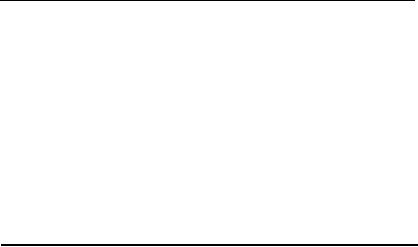
JOTP-011
5 December 2014
APPENDIX A. BACKGROUND/RATIONALE
ANNEX 1. ENVIRONMENTAL TESTS
If opting to substitute some of the hot diurnal cycles for fixed temperature stressing; only 28 of the
56 cycles should be substituted (with the remaining 28 cycles being applied along with the constant
thermal stressing). Using the Arrhenius kinetic model discussed in STANAG 4370, AECTP 300
Method 306, Paragraph 2.4.2 `Test Duration', and an activation energy of 70 kJ/mol; constant
temperature stressing may be applied for 216 hours (9 days) at +71 °C, or 528 hours (22 days) at
+58 °C where unrealistic degradation is anticipated at +71 °C.
It should be noted that laboratory based ageing studies using small samples of material do not take
account of the geometry of the component and so some potential degradation mechanisms could
be missed. Furthermore, it should be noted that the thermal ramp conditioning time should not be
counted towards life estimates since it can prove difficult to determine the amount of thermal
energy input to the munition. Therefore, it is difficult to model the equivalent ageing likely to
have occurred within the munition.
Whatever ageing tests are conducted as part of the sequential trials program, the resulting
predictions must be compared with the results of in-service surveillance to determine how accurate
they were and whether any potential failure modes were missed.
A.1-2.3 Solar Radiation (Appendix C, Annex 1, Paragraph C.1-5).
This test is intended to aggravate those thermally induced degradation mechanisms associated with
elevated skin temperatures and thermal gradients within the weapon, that are induced due to solar
radiation. Since most Nations solar test chambers do not incorporate the ultraviolet element of the
spectrum they tend not to aggravate the photo-chemical (actinic) degradation modes associated
with solar radiation. If this is of concern (as may be the case for some paints, adhesives and
polymers) then a separate ultra-violet exposure test will also be required. A minimum of seven
A1 climate category cycles (meteorological temperature and solar radiation) is recommended in
order to attain the maximum elevated temperatures throughout the test item. The solar radiation
level of 1120 W/m² is derived from MIL-STD-810, Method 505.
A.1-2.4 Thermal Shock (Appendix C, Annex 1, Paragraph C.1- 6).
This test is intended to simulate the rapid temperature transitions that are possible during
logistic movements of munitions. Two possible approaches are described below. Examine the
munition usage scenarios to determine the test item packaging configuration. If feasible, all
testing should be carried out on unpackaged items to provide worst case thermal stress conditions.
Stabilization at the temperature extremes is required.
A.1-5
For Parts Inquires call Parts Hangar, Inc (727) 493-0744
© Copyright 2015 Integrated Publishing, Inc.
A Service Disabled Veteran Owned Small Business